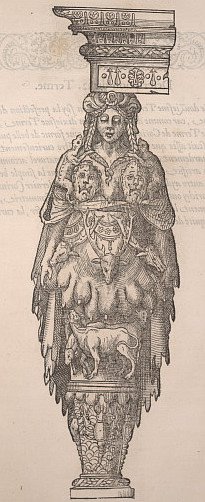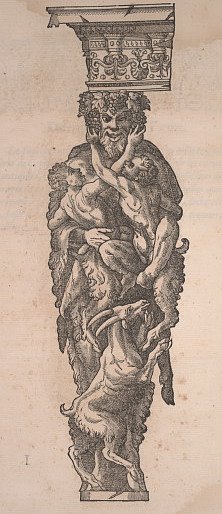







These extraordinary baroque column figures were produced in 1572 by the carpenter, sculptor and Dijon architect, Hugues Sambin.
As best I can make out, Sambin set down in anthropomorphic form the 'terms' of architecture to that point in time including ionic, doric, corinthian, tuscan, composite and a sixth one Sambin came up with himself, that of a combination of the other forms. I think that this was an early use of these (now) common terms.
The figures themeselves were meant to display the contradictory principles of inventiveness and abundance (again, I think this is Sambin's notion of the 6th term) of the renaissance period within the constraining nature of architecture.
The hugely embellished forms depicted did not have any great sway over the world of architecture except in so far as they reflected the decorative style seen particularly in some Italian constructions.
However, this work helps to explain where Joseph Boillot obtained the inspiration for his book from 20 years later that had less of the human and more of the animal as ornamental elements in columns -- see this previous post: Architectural Zoology. Sambin is apparently mentioned by Boillot in his book.
The above images come from an obscure goldmine. I stumbled into an academic's index list with a large number of fully digitized books (emblem/poetry/missals/iconography etc etc). I won't post the link yet until I've
But all the images from Oeuvre de la diversité des termes dont on use en architecture, réduict en ordre par maistre Hugues Sambin are available at Centre d'Études Supérieures de la Renaissance. Click 'mode image' at the bottom of the page. Although the images are larger I think the above jpegs are better quality. There are another 15 or 20 illustrations in addition to those here - which I've posted at full size.
Here's the translation of the review of Oeuvre - it's from an architectual point of view so tends towards the esoteric, irrespective of translational anomalies.
No comments:
Post a Comment